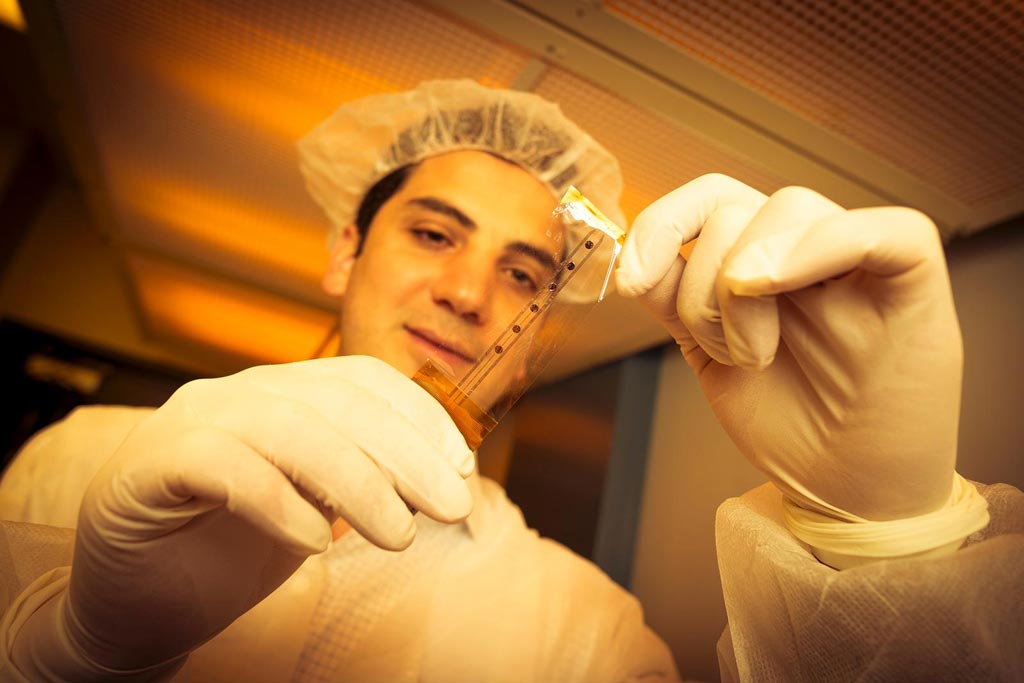Brain Mapping Tool Identifies Diseased Tissue
By MedImaging International staff writers
Posted on 07 Jun 2017
A new device to map the brain during surgery provides higher resolution neural readings than existing tools used in the clinic and could enable doctors to perform safer, more precise brain surgeries.Posted on 07 Jun 2017
Developed by researchers at the University of California, San Diego (UCSD, USA), Massachusetts General Hospital (MGH; Boston, USA), and other institutions, the device is an improved version of an electrocorticography electrode grid, which takes advantage of the electrochemical properties of poly(3,4-ethylenedioxythiophene):poly(styrenesulfonate) (PEDOT:PSS). Using PEDOT:PSS allows the new electrode grid to be about a thousand times thinner than current clinical electrode grids.

Image: The PEDOT:PSS electrode grid (Photo courtesy of David Baillot / UCSD).
The PEDOT:PSS microelectrode arrays is just 6 micrometers thick (versus several millimeters in current grids), which allows it to conform better to the intricately curved surface of the brain and obtain better readings. The new electrode grid also contains a much higher density of electrodes, since they can be spaced 25 times closer than those in current clinical electrode grids, enabling detection of changes in amplitude across pial surface distances as small as 400 µm, resulting in higher resolution recordings. The researchers also conducted several clinical tests.
In one test, the researchers performed background readings of a patient's brain waves both awake and unconscious. The PEDOT:PSS electrode grid identified normal functioning areas of the brain versus where the seizure areas with more detailed and higher resolution readings than the clinical electrode grid. Other tests that monitored the brain activity of patients performing cognitive tasks showed that both the PEDOT:PSS and standard electrode grids could differentiate between visual and audio inputs. The study was published on May 12, 2017, in Advanced Functional Materials.
“By providing higher resolution views of the human brain, this technology can improve clinical practices and could lead to high performance brain machine interfaces,” said senior author Professor Vikash Gilja, PhD, of the department of engineering at UC San Diego. “These electrodes occupy minuscule volumes; imagine Saran Wrap, but thinner. And we demonstrate that they can capture neural activity from the human brain at least as well as conventional electrodes that are orders of magnitude larger.”
Related Links:
University of California, San Diego
Massachusetts General Hospital













